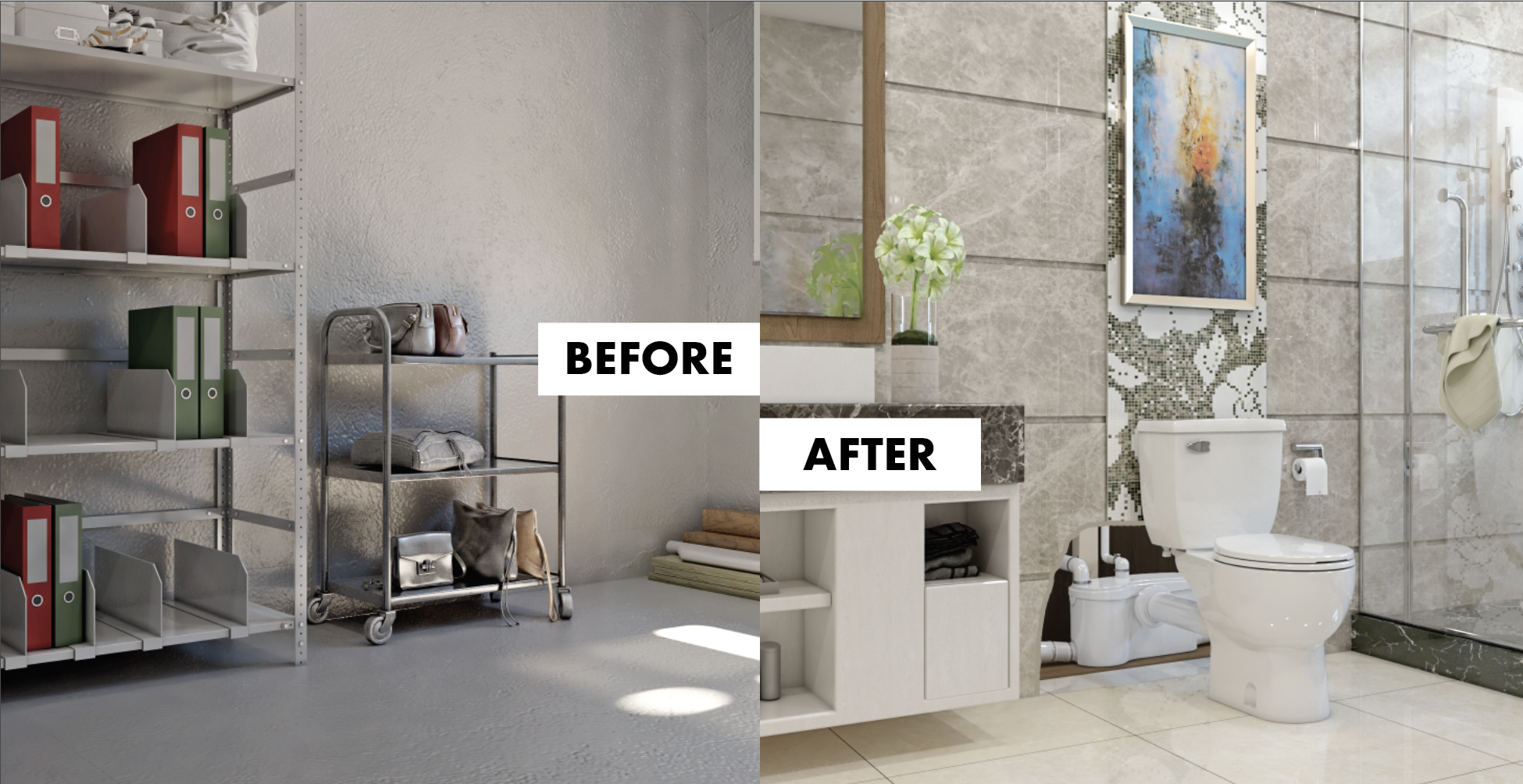Categories
Last blog articles
Search on blog
A question?
Contact us by our contact form
Four Tricks to Add a Bathroom Anywhere in Your Home
Blog 05/26/2021

When you sell your home, you can expect to recoup more than 50% of the cost of a bathroom addition....
Adding a bathroom to your home remains one of the most popular and rewarding home improvements you can make. In fact, when you sell your home, you can expect to recoup more than 50 percent of the cost of a bathroom addition, according to Remodeling Magazine's Cost vs. Value Report. Creating a new bathroom where none currently exists can, however, be among the more challenging home improvements you can make.
Fortunately, with careful planning and the help of innovative plumbing fixtures, it is possible to add a bathroom to virtually any home. Here are some common challenges and how you can address them to achieve the bathroom addition of your dreams:
1. Finding space
Where to put another bathroom is a burning question, whether your home is 1,800 square feet or 3,800. Of course, the question is more challenging for smaller or older homes, but options do exist. Many people find space in a basement, and with finishing a basement among the most popular types of renovation, adding a bath to this space makes a great deal of sense. If your home is built on a slab, other options might include taking some space away from a garage, or adding a powder room beneath stairs.

2. Breaking through concrete
Adding a bathroom in a basement, garage area or in a home that sits on a slab traditionally requires cutting into concrete. Yet there are many pitfalls to consider with this traditional approach. First, cutting into a concrete pad is a costly endeavor and inevitably weakens its structural integrity. The process creates dust and noise, and the contractor can't be sure what he will encounter; the slab may be thicker or thinner than anticipated, cracks can develop and a host of other problems may occur. These challenges can be solved with above-floor plumbing, and several options exist.
3. Plumbing and Drainage
Plumbing a bathroom addition is, arguably, the biggest challenge of this type of home improvement. Whether you're building in the basement, beneath a first-floor stairway or in an existing space within the house, finding room for pipes can involve opening walls or cutting into concrete - traditional approaches that can be inconvenient and costly.
Macerating toilet systems, such as Saniflo's Sanibest, can be an affordable, time-saving and convenient alternative. While you may be familiar with the concept of "upflushing" toilets that use a pump to move waste, macerating technology goes one better, incorporating a grinding feature that reduces solid waste before pumping out, which eliminates clogging. In addition to managing liquid and solid waste, this upflush technology easily accommodates waste water from a bathroom sink and a shower or bathtub in one convenient system. The company also offers high-efficiency toilets that use 20 percent less water than standard models - so it has less of an impact on the environment and your water bill. To learn more, visit http://www.youtube.com/watch?v=Sx2KBdsE21I.
4. Water supply
Ensuring an adequate supply of water - both hot and cold - is another common challenge homeowners must consider when adding a bathroom. Before moving forward with their home improvement plans, homeowners should assess the capacity of their water heaters and the condition of existing plumbing within the home. Is your water heater up to the task of serving an additional bathroom? If you're adding a powder room, it will require less hot water than a full bath where people will need lots of hot water for showers.
Finally, ask your plumber to inspect existing pipes in the home. Are they in good condition? Will they withstand the added demands of a new bathroom? Will they work well with the new piping that will be present in the new bathroom?
There's no arguing that adding a bathroom improves both your home's value and your family's use and enjoyment of the space. By addressing some common challenges in the planning stages of your home improvement, you can ensure your new bathroom is efficient, user-friendly and cost-effective.
